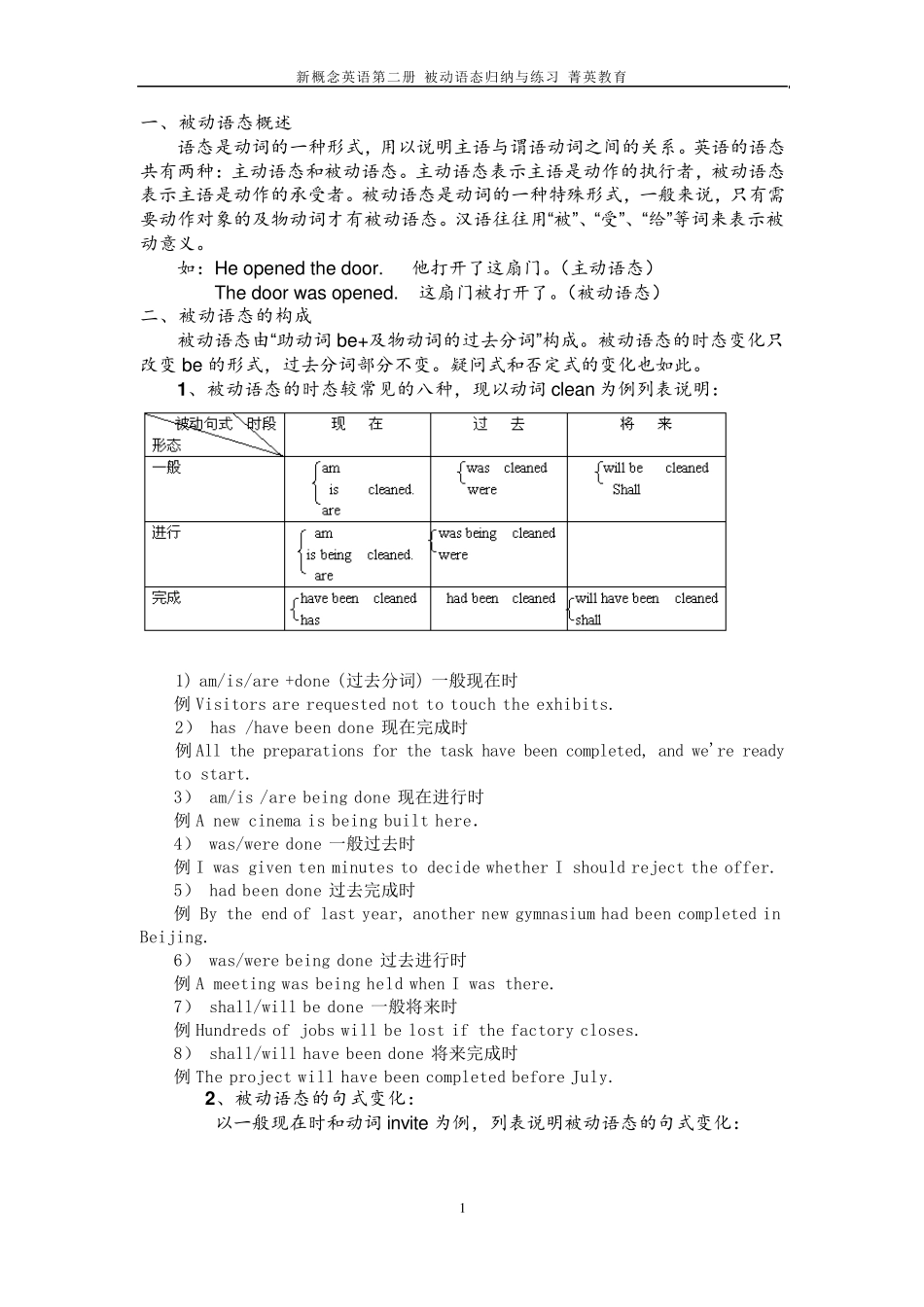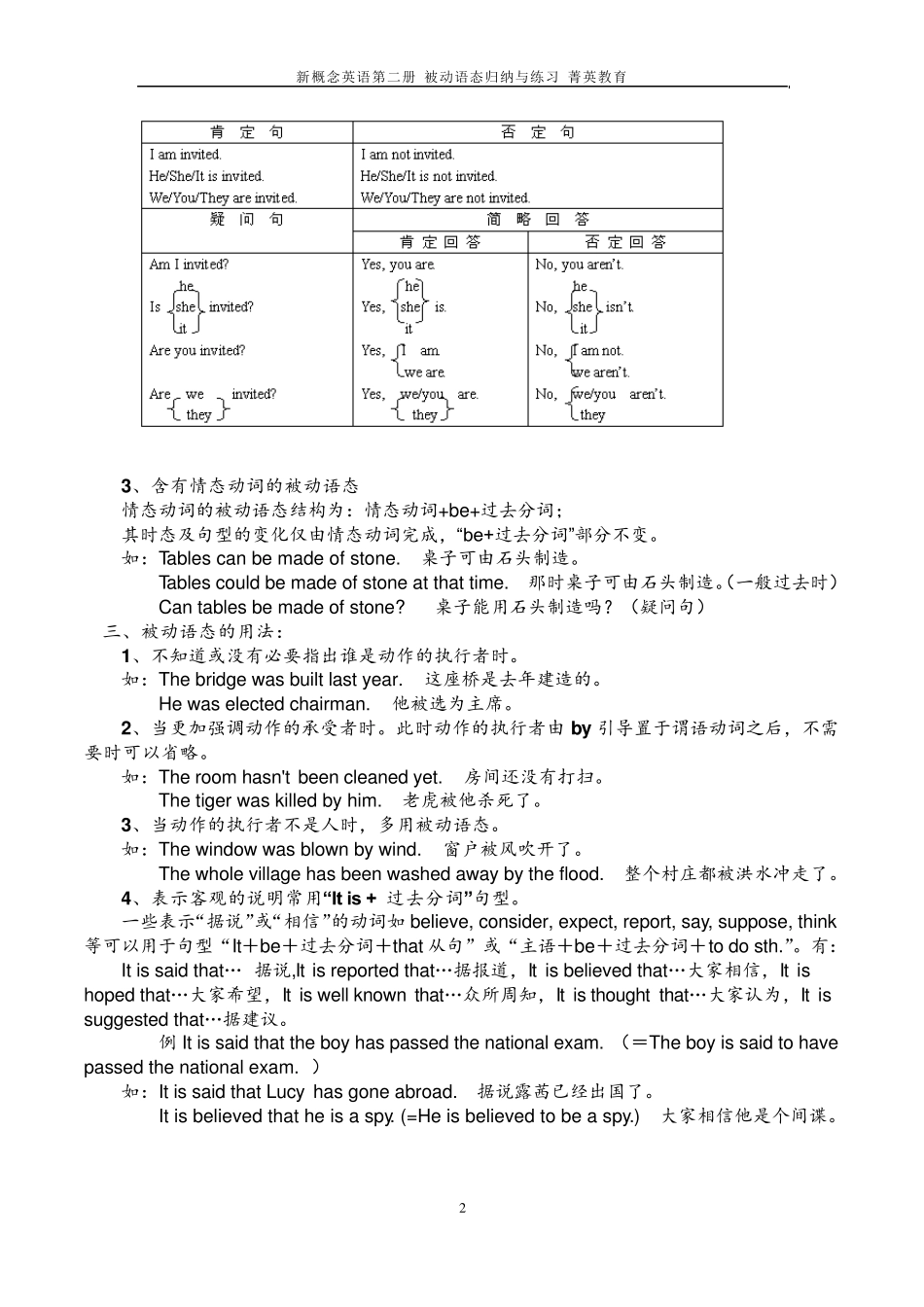新概念英语第二册 被动语态归纳与练习 菁英教育 1 一、被动语态概述 语态是动词的一种形式,用以说明主语与谓语动词之间的关系。英语的语态共有两种:主动语态和被动语态。主动语态表示主语是动作的执行者,被动语态表示主语是动作的承受者。被动语态是动词的一种特殊形式,一般来说,只有需要动作对象的及物动词才有被动语态。汉语往往用“被”、“受”、“给”等词来表示被动意义。 如:He opened the door. 他打开了这扇门。(主动语态) The door w as opened. 这扇门被打开了。(被动语态) 二、被动语态的构成 被动语态由“助动词 be+及物动词的过去分词”构成。被动语态的时态变化只改变 be 的形式,过去分词部分不变。疑问式和否定式的变化也如此。 1 、被动语态的时态较常见的八种,现以动词 clean 为例列表说明: 1) am/is/are +done (过去分词) 一般现在时 例 Visitors are requested not to touch the exhibits. 2) has /have been done 现在完成时 例 All the preparations for the task have been completed, and we're ready to start. 3) am/is /are being done 现在进行时 例 A new cinema is being built here. 4) was/were done 一般过去时 例 I was given ten minutes to decide whether I should reject the offer. 5) had been done 过去完成时 例 By the end of last year, another new gymnasium had been completed in Beijing. 6) was/were being done 过去进行时 例 A meeting was being held when I was there. 7) shall/will be done 一般将来时 例 Hundreds of jobs will be lost if the factory closes. 8) shall/will have been done 将来完成时 例 The project will have been completed before July. 2 、被动语态的句式变化: 以一般现在时和动词 invite 为例,列表说明被动语态的句式变化: 新概念英语第二册 被动语态归纳与练习 菁英教育 2 3、 含 有 情 态 动 词 的 被 动 语 态 情 态 动 词 的 被 动 语 态 结 构 为 : 情 态 动 词 +be+过 去 分 词 ; 其 时 态 及 句 型 的 变 化 仅 由 情 态 动 词 完 成 , “be+过 去 分 词 ”部 分 不 变 。 如...


